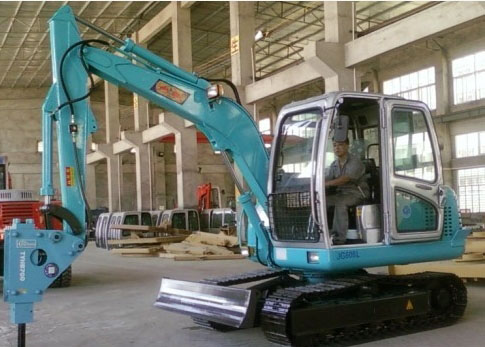 On November 25th, at the China Quality Association’s release of the results of the survey on the meantime of failure of excavator products this year, Fan Tianshun, Assistant Secretary-General of the China Quality Association and Director of the National User Division, pointed out that the domestic market share of domestic excavator brands is increasing. However, in the power system, hydraulic system, etc., the failure rate of independent brands is higher than that of foreign brands. This is not optimistic, and domestic brands need to catch up.
On November 25th, at the China Quality Association’s release of the results of the survey on the meantime of failure of excavator products this year, Fan Tianshun, Assistant Secretary-General of the China Quality Association and Director of the National User Division, pointed out that the domestic market share of domestic excavator brands is increasing. However, in the power system, hydraulic system, etc., the failure rate of independent brands is higher than that of foreign brands. This is not optimistic, and domestic brands need to catch up. Fan Tianshun said that in order to fully understand the physical quality of excavator products, it provides more objective and real information for the domestic market to purchase products, and also provides quality improvement information for various brand manufacturers. From November to November, the company organized an industry-wide average time-to-failure survey focusing on medium and small tonnage excavators to truly understand the quality reliability of different brands of excavators.
The survey selected six brands among the top 10 sales in the market this year, including three independent brands, Liugong, Sanyi, Yuchai, and three foreign brands, Komatsu, Hitachi, and Kobelco. The survey method was interview.
The survey results showed that the average time between failures of medium-sized excavators with medium-sized (less than 15 tons for 35 tons and more than 15 tons) and small-sized (less than 15 tons) brands of their own brands has approached or even surpassed that of foreign brands. The reliability has been greatly improved, but large-tonnage (35 More than t) Excavator foreign brand reliability still dominates.
Surveys have shown that, regardless of Chinese and foreign brands, the hydraulic system is a system with a high failure rate. The failure rate of the self-owned brand electrical system is much higher than that of foreign brands, and the failure rate of the body and structural system accessories is higher for foreign brands.
Relevant experts pointed out that the improvement of the reliability of the whole-machine brand excavator is a major advancement in China's construction machinery industry. Better quality, relatively lower prices, will create more value for the majority of users. But at the same time, we must also see that in terms of large-tonnage excavators, the self-owned brands still need to work hard; in the core components of the hydraulic system, they still rely on imports, which is the bottleneck of the construction machinery industry in the future.
According to statistics, in 2002, the sales volume of excavators in the domestic market was more than 19,000 units, and the market share of independent brands was 8%. From January to October 2012, excavator sales in the domestic market exceeded 90,000 units, and the market share of independent brands was 42%. Among them, the excavator market is still dominated by foreign brands for a long time, its overall market share far exceeds its own brand, and it has not changed until the last two years.
The melt flow index (MFI) is a measure of the ease of flow of the melt of a thermoplastic polymer. It is defined as the mass of polymer, in grams, flowing in ten minutes through a capillary of a specific diameter and length by a pressure applied via prescribed alternative gravimetric weights for alternative prescribed temperatures.[1][2] Polymer processors usually correlate the value of MFI with the polymer grade that they have to choose for different processes, and most often this value is not accompanied by the units, because it is taken for granted to be g/10min. Similarly, the test load conditions of MFI measurement is normally expressed in kilograms rather than any other units. The method is described in the similar standards ASTM D1238[3] and ISO 1133.[4]
Melt flow rate is an indirect measure of molecular weight, with high melt flow rate corresponding to low molecular weight. At the same time, melt flow rate is a measure of the ability of the material's melt to flow under pressure. Melt flow rate is inversely proportional to viscosity of the melt at the conditions of the test, though it should be borne in mind that the viscosity for any such material depends on the applied force. Ratios between two melt flow rate values for one material at different gravimetric weights are often used as a measure for the broadness of the molecular weight distribution.
Melt flow rate is very commonly used for polyolefins, polyethylene being measured at 190 °C and polypropylene at 230 °C. The plastics engineer should choose a material with a melt index high enough that the molten polymer can be easily formed into the article intended, but low enough that the mechanical strength of the final article will be sufficient for its use.
Melt Flow Index Tester,Plastic Melt Flow Index Testing Equipment ,Plastic Melt Flow Index Tester,Digital Plastic Melt Flow Index Tester
JINAN KASON TESTING EQUIPMENT CO., LTD. , http://www.hstester.com